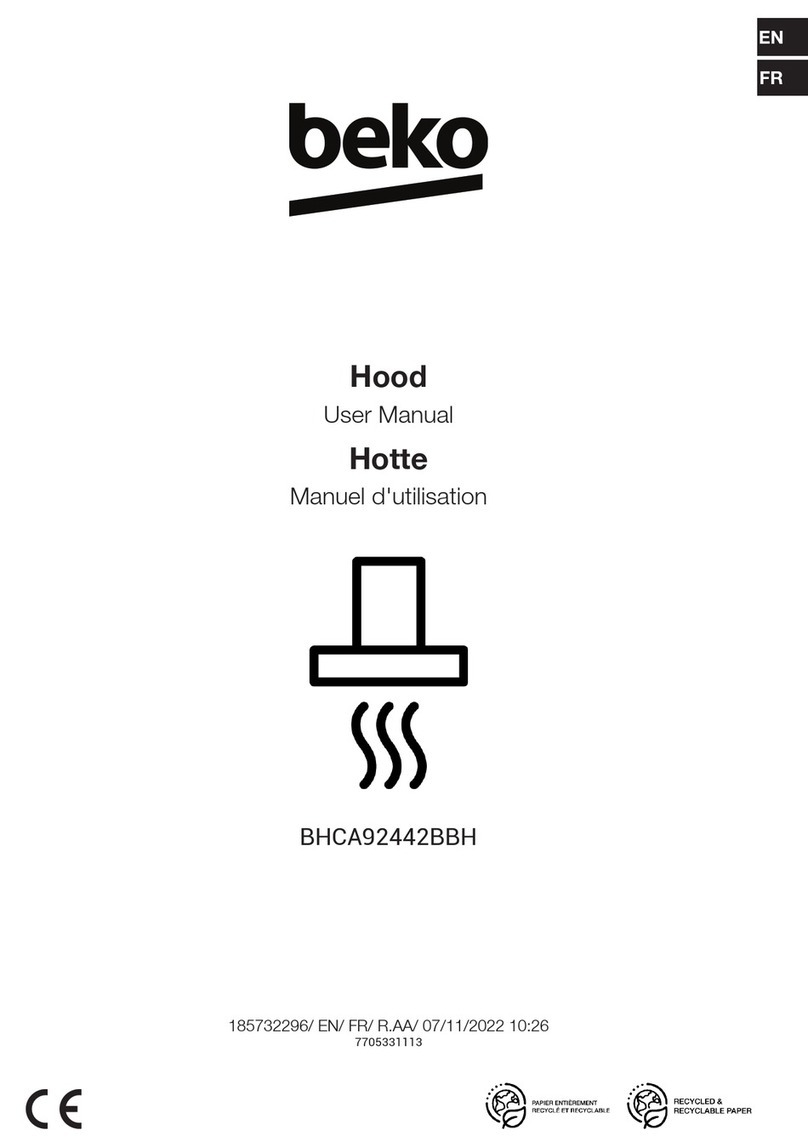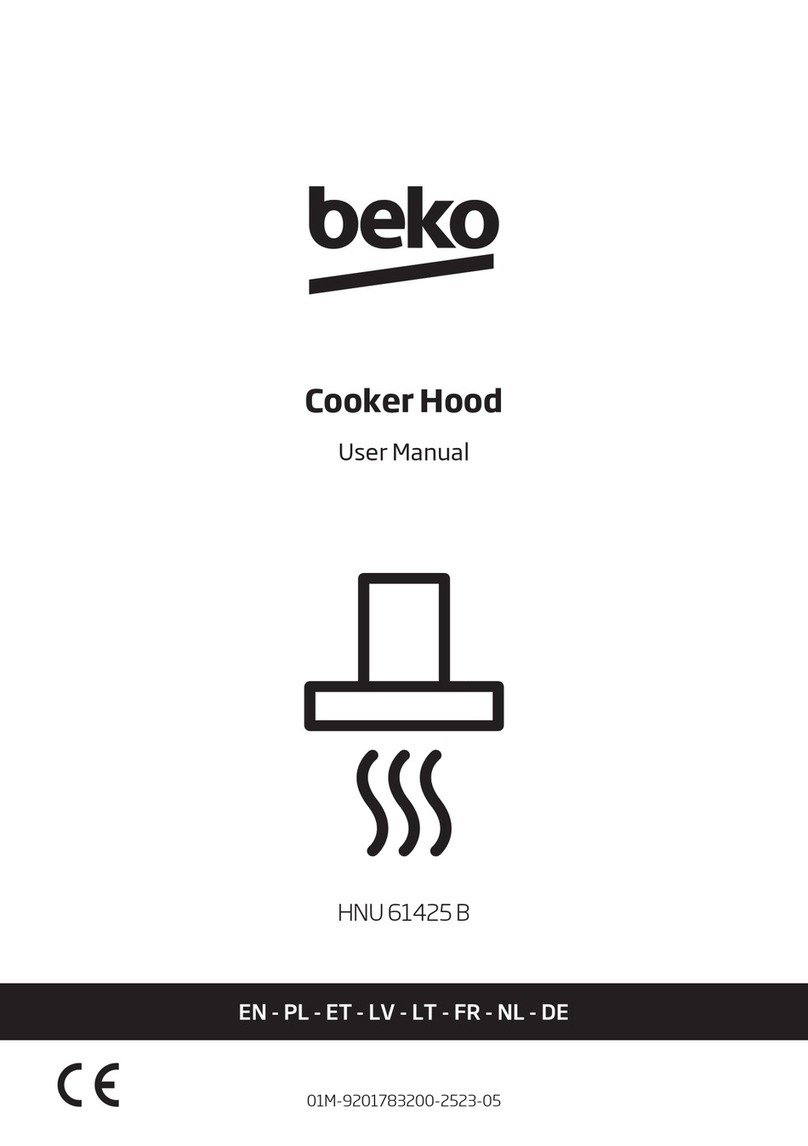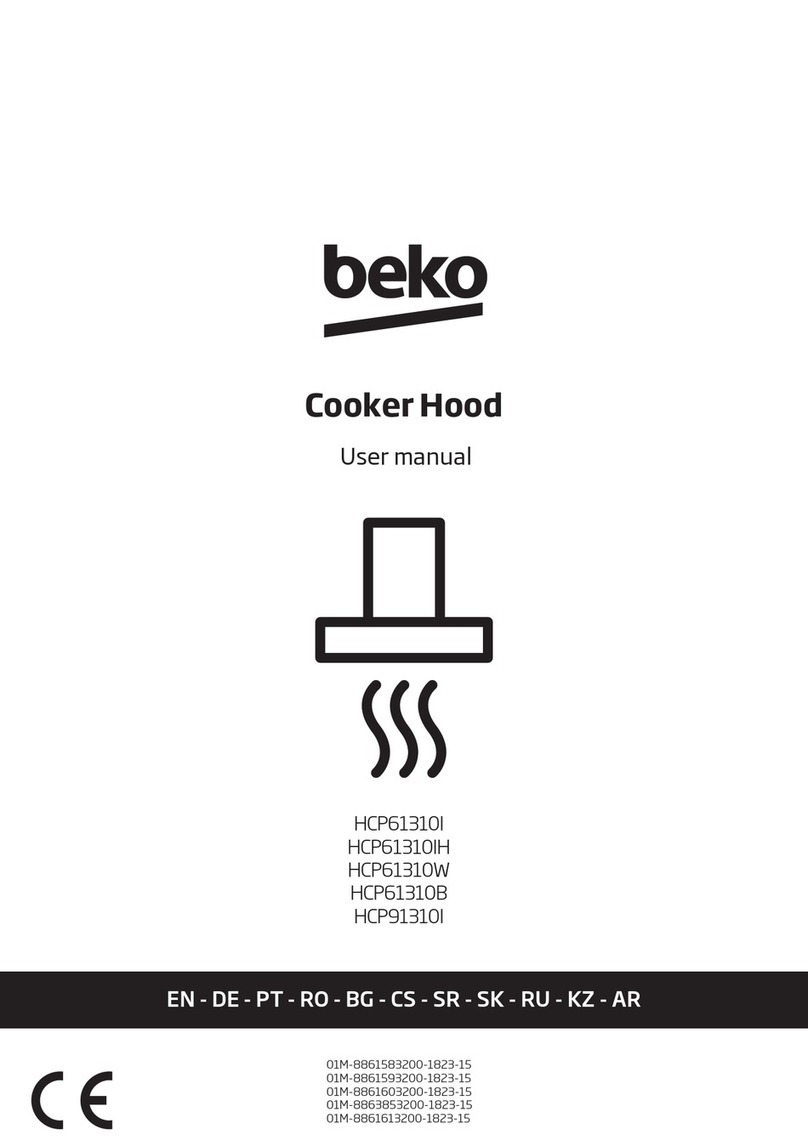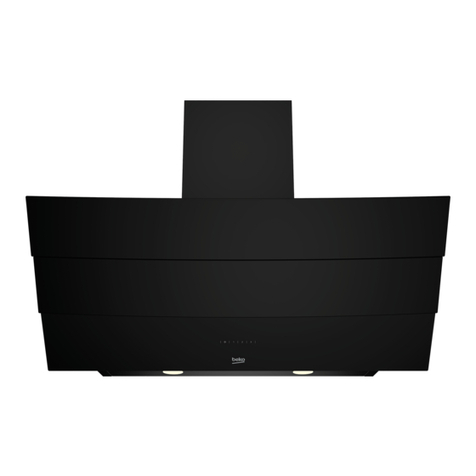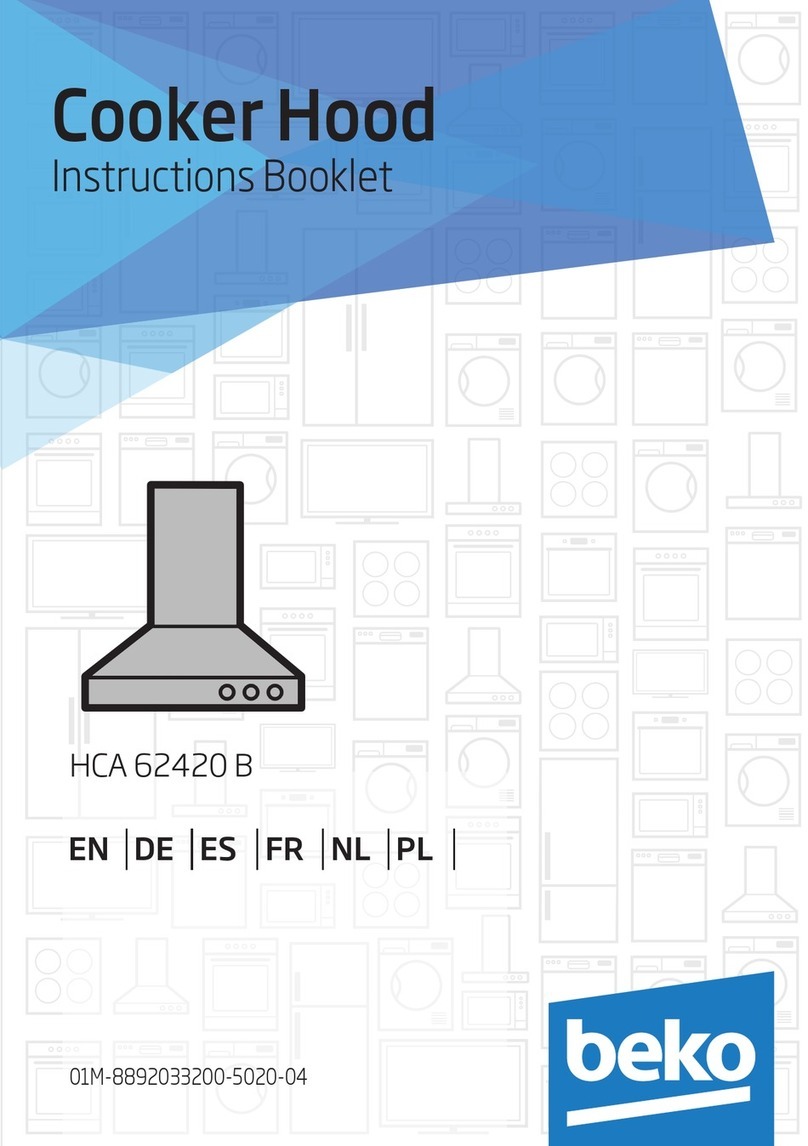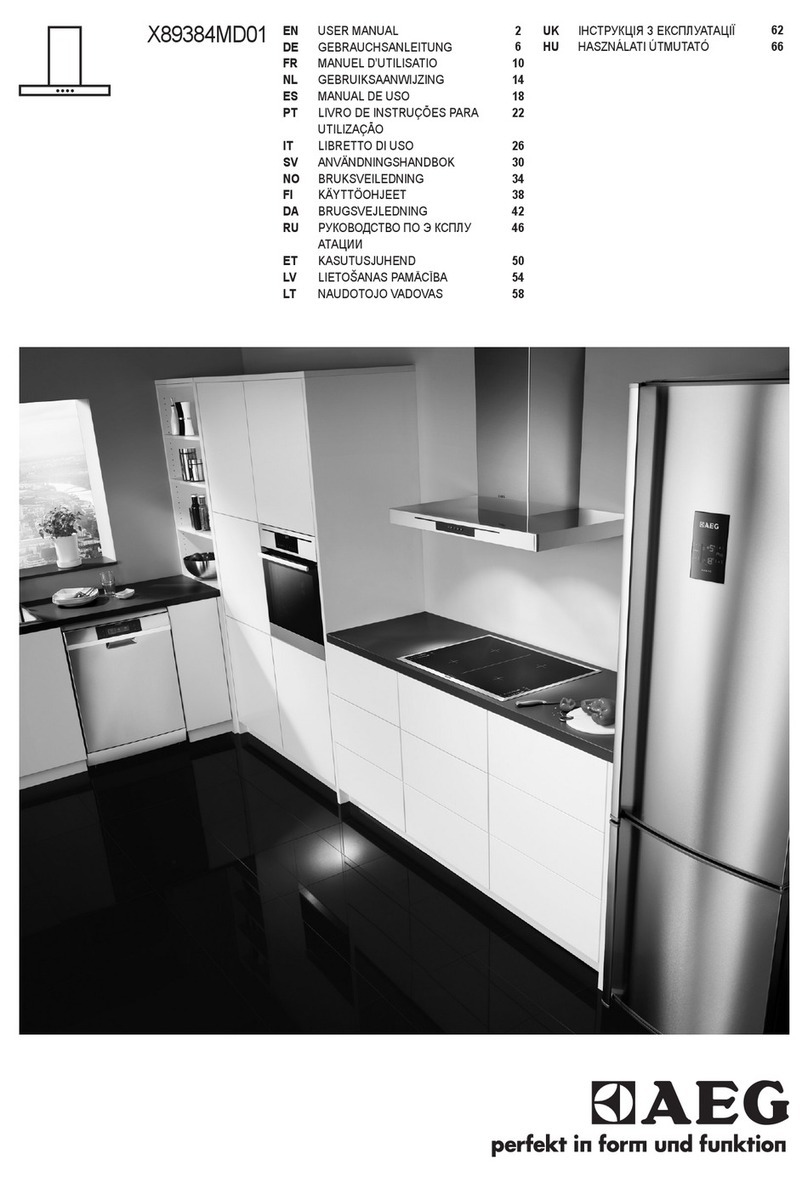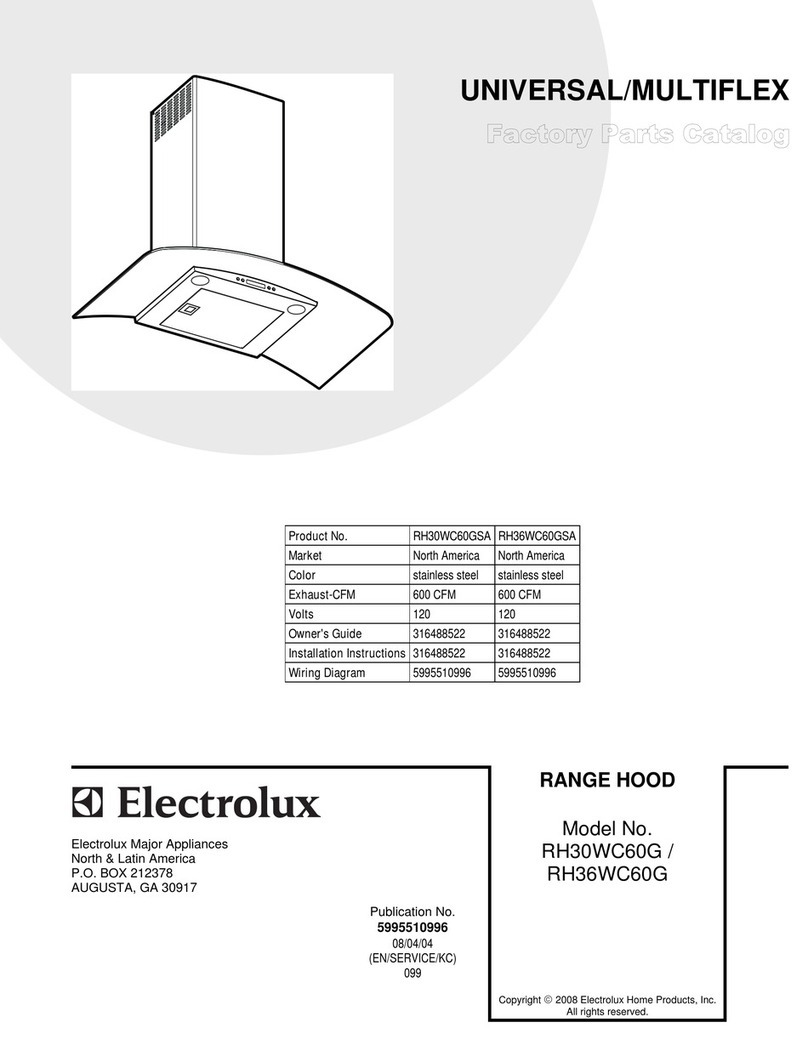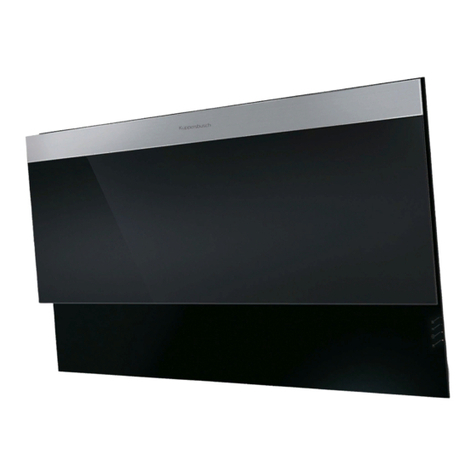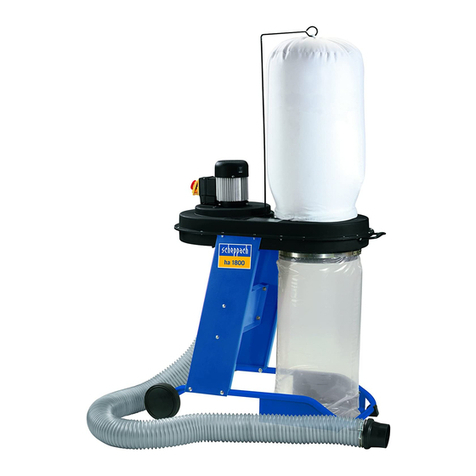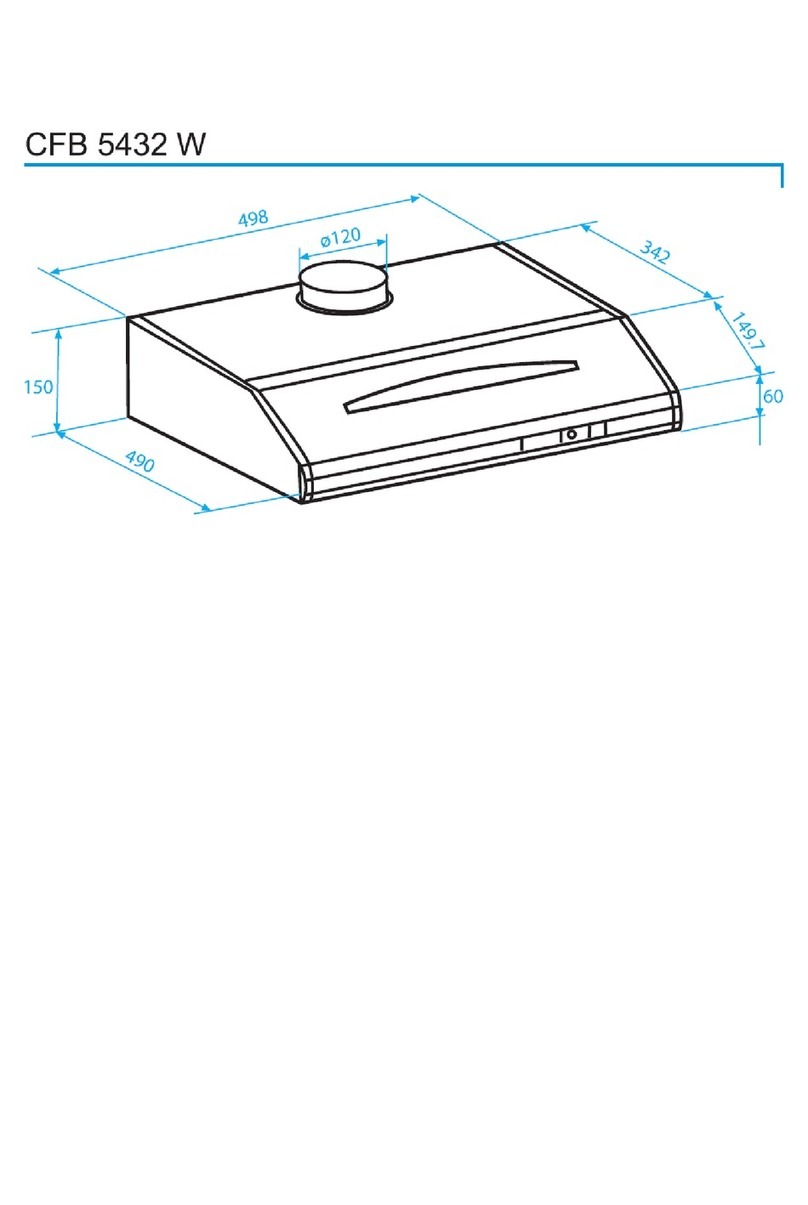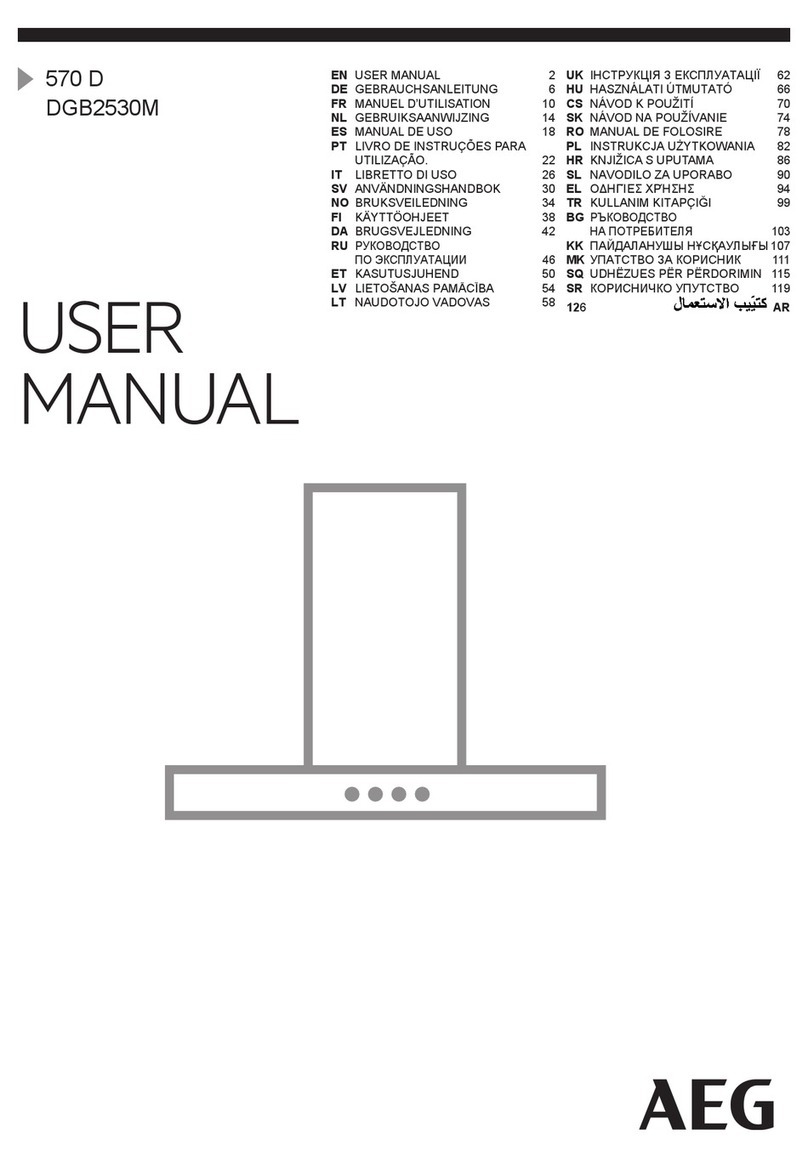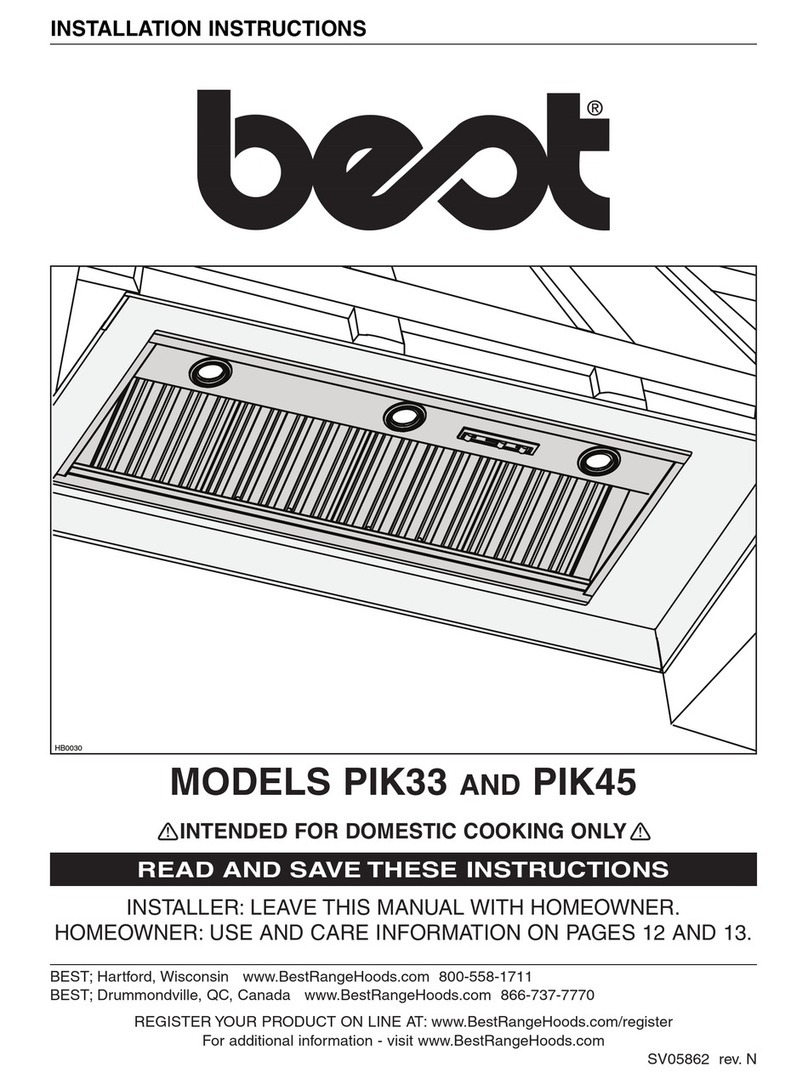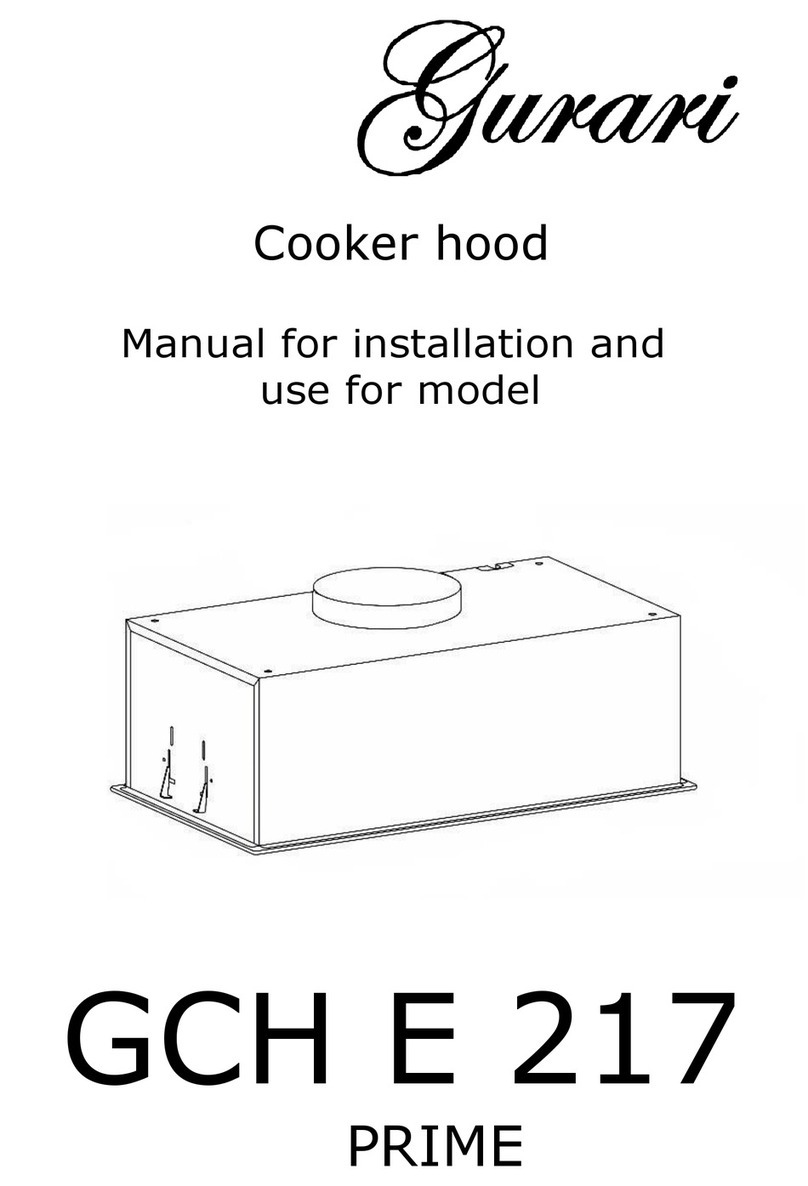
19 / 30 ES
Campana Extractora / Manual De Utilización
3 Uso y mantenimiento
•Se recomienda poner en funcionamiento el
aparato antes de proceder a la cocción de un
alimento cualquiera. Se recomienda también,
dejar funcionar el aparato durante 15 minutos
después de haber finalizado la cocción para lo-
grar una evacuación completa del aire viciado.
El buen funcionamiento de la campana depende
de la realización de un correcto y constante
mantenimiento; se debe prestar una atención
particular al filtro antigrasa y al filtro de carbón
activo.
•El filtro antigrasa cumple la función de rete-
ner las partículas grasas en suspensión en el
aire, por lo que se puede obstruir en relación al
tiempo de uso.
•Para prevenir el peligro de incendio, cada 2
meses máximo se deben lavar los filtros anti-
grasa a mano, usando detergentes líquidos neu-
tros no abrasivos, o sino en el lavavajillas a baja
temperatura y ciclos breves.
•Después de algunos lavados puede cambiar de
color. Esto no da derecho a reclamar su susti-
tución.
•Los filtros de carbón activado sirven para
depurar el aire que se vuelve a inyectar en el
ambiente, con el objetivo de atenuar los olores
desagradables que genera la cocción.
•Los filtros de carbón activado no regenerables
deben cambiarse cada 4 meses como máximo.
La saturación del carbón activado depende del
uso más o menos prolongado del aparato, del
tipo de cocina y de la regularidad con que se
limpie el filtro antigrasa.
•Los filtros de carbón activado regenerables se
deben lavar a mano, con detergentes neutros no
abrasivos, o sino en lavavajillas a una tempera-
tura máxima de 65 °C (el ciclo de lavado debe
realizarse sin vajilla).
Quite el agua en exceso sin dañar el filtro y
quite también las partes plásticas, luego seque
la colchoneta en el horno durante al menos 15
minutos a una temperatura máxima de 100 °C.
Para que el funcionamiento del filtro de carbón
se mantenga eficientemente, debe repetir esta
operación cada 2 meses. Deben remplazarse
cada 3 años años como máximo, o bien cuando
se dañe la colchoneta.
•Antes de volver a montar los filtros anti-
grasa y los filtros de carbón activado re-
generables, se los debe secar bien.
•Limpie frecuentemente la campana, tanto
interna como externamente, usando un
paño humedecido con alcohol desnatura-
lizado o detergentes líquidos neutros no
abrasivos.
•La instalación de luz se diseñó para el uso du-
rante la cocción y no para usos prolongados de
iluminación general del ambiente. Emplearla de
esta forma disminuye notablemente la duración
media de las lámparas.
•Si el aparato cuenta con la luz de cortesía ésta
se puede usar para el uso prolongado de ilumi-
nación general del ambiente.
A
No respetar las advertencias de
limpieza de la campana y de sus-
titución y limpieza de los filtros
comporta riesgos de incendio. Por
tanto, es recomendable atenerse a
las instrucciones sugeridas.
Sustitución de las lámparas LED
(Fig.7):
Si la versión del aparato es aquella con lámparas
LED, para sustituirlas es necesaria la intervención
de un técnico especializado.


























